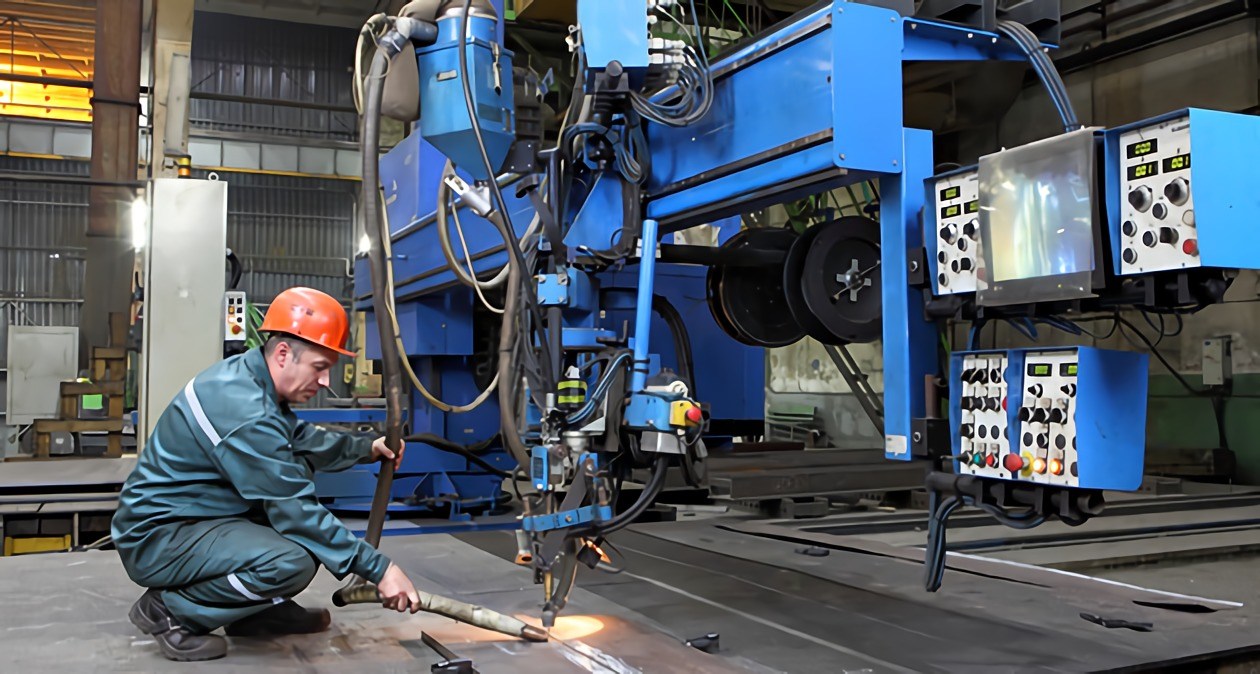TWS is a Great Training Option for Everyone
Learn more about how we can prepare you to advance your career.
While there is an array of job opportunities in the manufacturing industry for welders, those trained in the latest technologies will likely have the greatest advantage. Over the years, companies have streamlined manufacturing processes, and finding skilled welders with up-to-date training has proven sometimes challenging. An individual who first learns welding fundamentals and then continues gaining experience in the industry stands a better chance of finding a welding job in manufacturing than someone who enters with no experience. Keeping one’s skillset current requires knowledge of the latest trends in manufacturing, such as robotic and semi-automatic welding.
Robotic Welding
One of the primary reasons manufacturing companies are turning to robotic welding is efficiency: robots never take sick days and can work around the clock, enabling companies to do more with less money. However, the increased reliance on robotic welding may actually mean that higher-level welders are necessary, rather than replaceable. Humans are needed to oversee and maintain robotic welding systems, as well as repair and maintain these systems. In fact, manufacturing companies in general have faced difficulty finding skilled welders.
Welding robot supervision and welding robot maintenance are two job opportunities for qualified welders. In order to obtain one of these positions, an individual usually must have a high school diploma, welding training at a technical school, and additional experience in welding technology and robotic welding. In some cases, a company will give new workers on-the-job training to suit the company’s specific needs and requirements.
Semi-Automatic Welding
Semi-automatic welding machines handle the same tasks as robotic welding machines and are widely used in the manufacturing industry. Price and the degree of labor necessary for operation are the two factors that differentiate semi-automatic welding machines from robotic ones. While semi-automatic systems often start at around $30,000, companies considering fully automated turnkey systems should budget between $175,000 and $250,000. The former systems require more human labor, as the parts must be loaded into the machine and the operation monitored until completion, as opposed to simply turning on a robotic system.
Have You Considered a Career in the Skilled Trades?
Fill out the form to recieve a no obligation info packet.
Operating a semi-automatic welding machine requires the same qualifications that one would need to become a regular welder, as well as additional training in many cases. Attending a vocational school can provide the foundation to later learn advanced welding techniques. The U.S. Department of Labor reports that welders who are certified in one or more processes can obtain employment more easily than those who are not certified. The median annual wage varies depending on the type of semi-automatic welding that is being done, with laser sheet welding being a lucrative job option.
The Future of Welding in Manufacturing
Despite the increasing popularity of robotic and semi-automatic welding systems, qualified human welders are still needed in the manufacturing industry; the demand for them, however, is shifting from filling positions for simple welding jobs to those of supervising, repairing, and installing semi-automatic and robotic welding systems. Tulsa Welding School offers entry-level welding training. Learn more about the school’s welding programs and courses today.
This blog has been labeled as archived as it may no longer contain the most up-to-date data. For a list of all current blog posts, please visit our blog homepage at https://www.tws.edu/blog/







